Save Our Soils
To protect the planet's soils from collapse
– and thus ourselves –
we must radically change the way we farm
by Marius Münstermann
photos & videos Christian Werner
illustrations Erik Tuckow

For this multimedia journey into the hidden world beneath our feet
we recommend full screen mode and headphones.
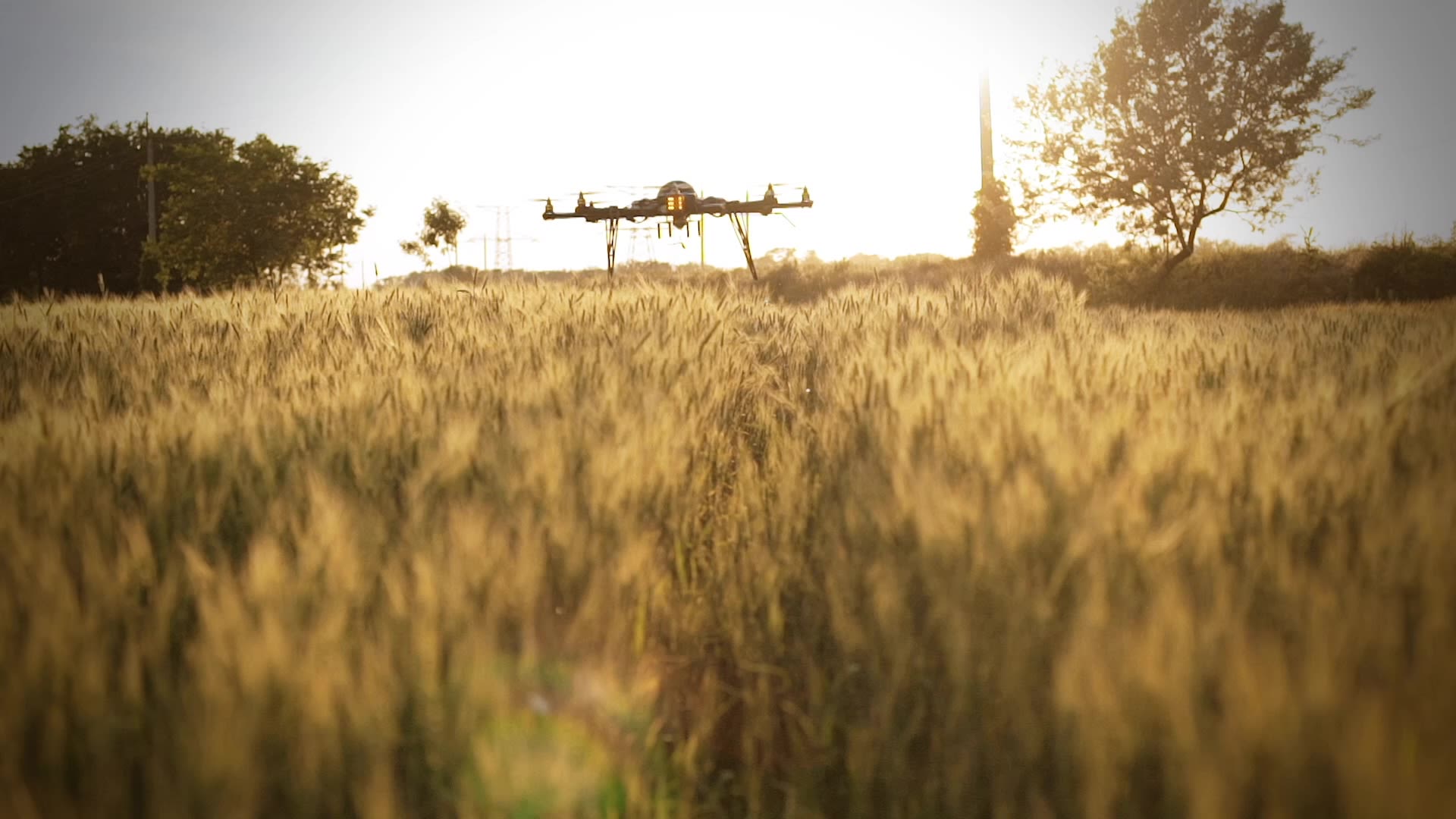
CHAPTER III
Green Revolution 2.0
„Data is the new soil.“
David McCandless, information designer and data-journalist

It poured like buckets during the night. Yet, Bernd Olligs' boots do not sink into the mud as the 55-year-old trudges onto his wet field in Rommerskirchen in the Lower Rhine region. „The water has to be able to seep away on the spot“, Olligs explains. To demonstrate how this works for him, Olligs takes long strides out onto the field directly behind the Damianshof farm, which is now in its sixth generation.



Sugar beets, potatoes, wheat and rapeseed on 120 hectares. „On one of the best soils in the world“, Bernd Olligs says proudly.
Power lines cross the fields, on the horizon the cooling towers of the Neurath coal-fired power station pump steam into the cloudy sky. Behind them, the gigantic coal mines of Garzweiler gape into the landscape. Bernd Olligs works within sight of one of Europe's biggest CO2 guzzlers.
Soils like his, on the other hand, could be a key component in the fight against the climate crisis. At least Bayer is convinced of this. The Damianshof is one of 27 farms with which the German agrochemical giant has been building up its „Carbon Farming“ program in Europe since 2022.
The business model behind carbon farming is to reward farmers for the humus in their fields. As building humus removes CO₂ from the atmosphere, farmers receive certificates for every tonne of carbon stored in their soil. The certificates can then be turned into money. These certificates are issued by companies that act as service providers who want to measure and prove carbon storage. Other companies, in turn, can buy the humus certificates and use them to improve their carbon footprint, at least on paper.
However, this idea is increasingly being criticized – especially since the Who's Who of the global economy has discovered farmland as a carbon sink. „Carbon farming is part of a rapidly growing corporate agenda pushed by big polluters from the agriculture and fossil fuel industry alike“, Sophie Scherger from the Institute for Agriculture & Trade Policy (IATP) states in her comprehensive analysis. „Corporate polluters see the new framework as a massive opportunity to generate great amounts of carbon credits that will allow continued emissions and delay urgently needed emissions cuts.“
In the US, companies like McDonald's and Microsoft have already installed their own carbon farming projects over the recent years. The Italian oil and gas company Eni is marketing the cultivation of biofuels in Kenya as a climate protection measure. Shell has bought Select Carbon, a start-up whose partner companies in Australia claim to be practising carbon farming on more than nine million hectares of land. The German chemical company BASF also wants to establish its own carbon farming system. In Ireland, the company already cooperates with a brewery that produces „climate beer“ using barley from carbon-certified land. The slogan used by the Norwegian fertilizer producer Yara sums up the idea best: „Carbon farming is good for our farmers, our businesses, and our planet.“
Dutch Rabobank is one of the first financial service providers to pay farmers money for carbon certificates. In its „Soil Strategy for 2030“, the European Commission states: „The banking and financial sector is increasingly interested in investing in those farmers who apply sustainable practices and increase soil carbon, as well as creating market-based incentives for carbon storing.“
„Soils are more than just a carbon sink“
However, many doubts remain. „There is no clear definition of carbon farming“, says Axel Don, the deputy director of the Thünen Institute for Climate-Smart Agriculture in Braunschweig. He has calculated that up to five million tons of greenhouse gases could potentially be stored in Germany's arable soils by building up humus. „But this is offset by high emissions“, Don stresses. In Germany alone, agriculture emits around one hundred million tons of climate-damaging gases into the atmosphere every year, including large quantities of nitrous oxide and methane, which are even more harmful to the climate than CO2. Agriculture therefore currently contributes much more to the problem than to the solution.
In addition, the build-up of humus is not necessarily permanent, Don warns: „If agricultural practices are changed later on, the stored carbon can also be released again quickly.“ The geoecologist reminds us that „agricultural soils are more than just a carbon sink. Climate protection is just one aspect, but perhaps not the most important one.“ Humus-rich soils provide healthy food and can help to protect biodiversity and water. That's why Don says: „A narrowed view of the stored tons of CO2 carries the risk that other goals will fall by the wayside.“
Nevertheless, carbon farming is set to play a key role for the EU on the road to achieving climate neutrality by 2050. When the EU Parliament adopted its report on„sustainable carbon cycles“ in March 2023, parliamentary rapporteur Alexander Bernhuber said: „Carbon farming can become another source of income for Europe's agriculture and forestry sectors.“ With its Carbon Farming Initiative, the EU wants to support farms that cultivate catch crops or do without plowing.
Farms like Bernd Olligs' Damianshof would benefit from this. On his farmland in the Rhineland, he already implements many things that are proven to be good for the soil.
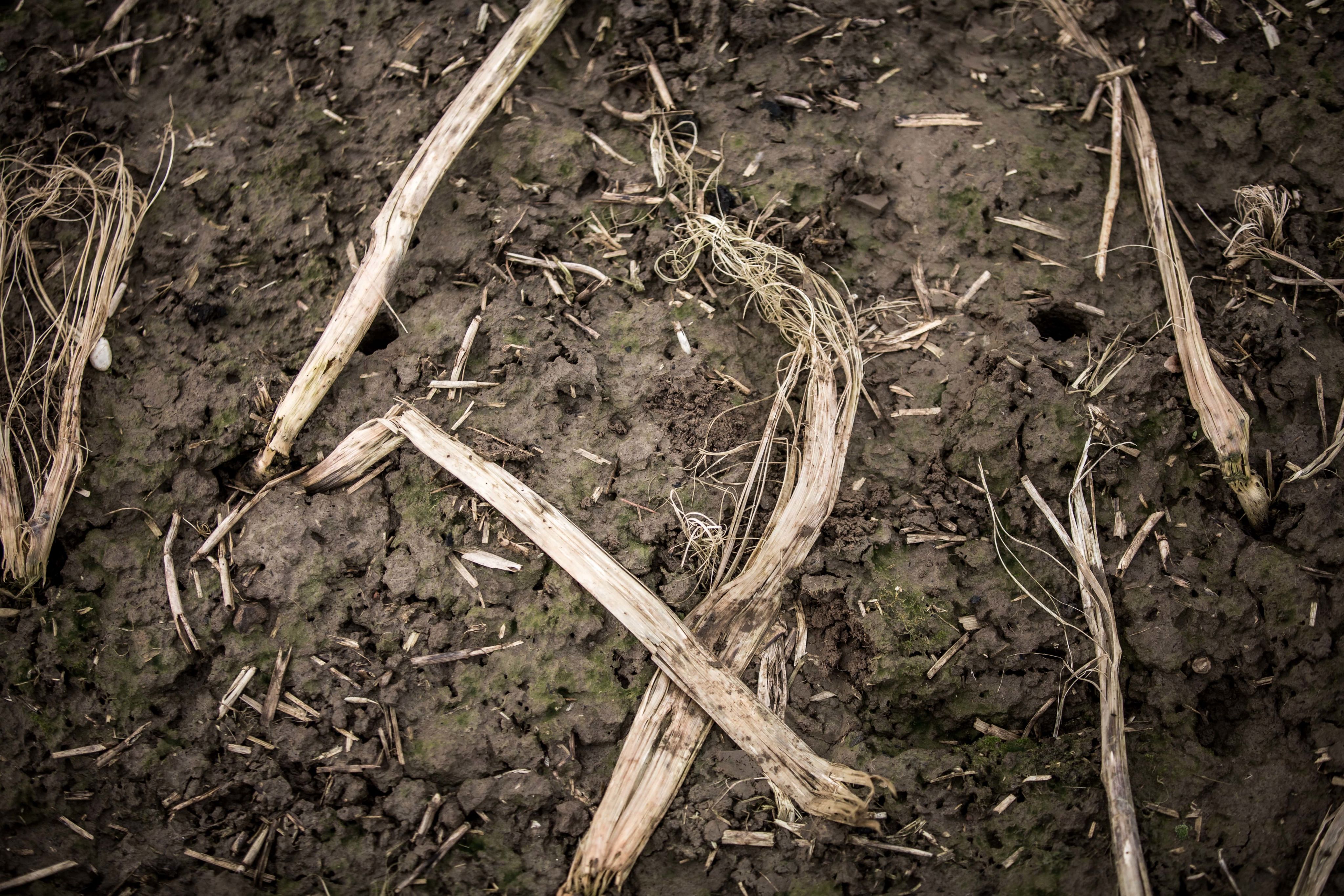

Olligs points to holes the size of mice. „That's where the roots of the winter radish have rotted.“ Last summer, after the grain harvest, he planted the radish together with other species as a catch crop.
„You have to drive over the radish with a thick roller on a cold winter morning“, Olligs explains. „The radish has to really crack under the tractor.“ The radish plants killed in this way rot, they are pulled into the soil by earthworms and converted into humus. What remains are the many holes in which the rain can seep away quickly and the subsequent crop can take root well.
But the increasingly mild frost and the roller are not always enough to kill the catch crops. In this case, Bernd Olligs uses glyphosate. „The alternative would be ploughing to a depth of around thirty centimetres, which would destroy the capillarity built up by the catch crop“, says the Bayer press spokesman who accompanies the visit at Olligs' farm. „It's about working the soil as little as possible in the spring.“
This is where the circle closes: Bayer's herbicides allow ploughless farming. In turn, Bayer can sell this way of farming as a climate protection measure in the form of carbon farming certificates.
Bayer's press spokesperson claims: „Glyphosate is definitely better for the soil and climate than intensive tillage.“ He adds: „By definition, a field is not a place for biodiversity, as the crop should grow there without competition for nutrients from other plants and weeds. Organic farming achieves this with the plow, the better option is glyphosate.“
Bernd Olligs cultivates his land mainly using the no-till mulch sowing method. For comparison purposes, he has also plowed a strip of his fields. The fact that many farmers till their soil and still use herbicides is commented by Olligs with a shake of his head: „Tilled and still sprayed – well, that's an own goal.“
„The intelligent field“
Bayer advertises Bernd Ollig's farm as a „Future Farm“. Here you can get an idea of how the agricultural industry envisions the farming of the future. This vision is rounded off with the digitalization of agriculture.
Bayer keeps an eye on every square centimetre of Ollig's fields: with sensors in the ground, cameras on the tractor, drones in the air and satellites in space. Catch traps indicate when unwanted insects appear in the crop. The data obtained in this way is combined with weather forecasts and other information. At Bayer, all the data is gathered in an app called „FieldView“. To this end, Bayer has reached an agreement with the agricultural machinery manufacturers Claas and John Deere to combine the data from all three companies. All major players in the agricultural industry have launched similar programmes for the digitalization of agriculture in recent years.
Only farmers who use one of these apps and provide their own farm data can participate in Bayer's program. „Farmers receive a free FieldView subscription if they want to participate in our carbon farming program“, the Bayer spokesperson explains. „We need that data to model what the soil has absorbed. This is the only way we can verify and certify the CO2 reduction to third parties.“ Big data is increasingly becoming a prerequisite for the production of agricultural products.
On his tablet, Bernd Olligs uses the app to display customized recommendations that Bayer has generated for his farm on a site-specific basis:
Where should he apply how much fertilizer?
Which pests are attacking his plants?
And which pesticide should he spray?





Digital precision is supposed to replace farmers' intuition and feel for their land. The argument with which the agricultural industry is increasingly taking away farmers' decision-making authority sounds strangely familiar: agriculture, the industry claims, is too inefficient to feed a growing world population.
However, this Green Revolution 2.0 is by no means intended to replace the agrochemical inputs of the first Green Revolution. On the contrary: the digitalization of agriculture ultimately rounds off the business model of the corporations. The industry continues to supply farmers with seeds, pesticides and fertilizers – and thanks to digitalization, their use is controlled and monitored by the companies' algorithms.
Bayer frames all this as the „intelligent field“ and as „precision agriculture“, which could help farmers save on fertilizers and pesticides. A company whose core business is the sale of fertilizers and pesticides is recommending farmers to use less of these products?
„From swords
to plowshares
to flocks of drones“
Matthias Berninger, chief lobbyist at Bayer

Hardly anyone embodies this supposed change of heart as much as Matthias Berninger. As a member of the Green Party, Berninger was state secretary at the Federal Ministry of Agriculture and Food. Since 2019, he has been Bayer's chief lobbyist. „We want to help ensure that agriculture makes a positive contribution. In order to feed humanity within planetary boundaries, agriculture as we know it today must undergo revolutionary change through innovation.“ This is Berninger's message: industrial agriculture is no longer the problem, but part of the solution.
The Underground Pharmacy
Bayer and competitors such as BASF and Syngenta have long been working on a new generation of pesticides and fertilizers. The companies are increasingly finding the ingredients for these new products under the ground. More precisely: in soil life.
It has long been known that the soil offers a rich reservoir of active ingredients. Almost a hundred years ago, penicillin, the first antibiotic, was extracted from a soil-dwelling fungus. Until today, more than 5000 antibiotic substances have been identified. However, because most of them are also toxic to human cells, only around one hundred antibiotics have been used as medicines to date. In times of antibiotic resistance, the search for new active substances from the soil continues as feverish as never before.
The species-rich genus Streptomyces seems particularly promising. These bacteria produce, among other substances, the odorant geosmin, which is responsible for the characteristic smell of forest soils and the smell of summer rain that falls on dry ground. Some Streptomyces species also produce active substances that are used in the deworming agent ivermectin, for example, and have proven to have a stress-reducing effect in tests on rats. Substances from other soil bacteria have an antidepressant effect and might help to reduce the emotional stress of cancer patients.
Bayer is not only searching the soil for new active ingredients for its pharmaceutical division, though. With the new possibilities offered by genome editing, life in the soil is increasingly becoming the focus of the agricultural industry. The aim is to integrate the most promising microorganisms from the soil into new products in order to sell them to farmers as fertilizers and pesticides. „Bayer’s collection of more than 125,000 microbial strains allows us to use genetic diversity to develop new and beneficial products for farmers all over the world“, Bayer claims on its website. „The fertilizer market is twice as big as the market for crop protection products and seeds combined“, says Matthias Berninger. „So that is a huge business area that is opening up for us if we focus on biology.“
Soil Life as a Product
Bayer has succeeded in developing one of the first products of its kind that uses genetically modified soil organisms: a treatment for corn and soybeans. The seed is treated to protect the freshly sown seeds and the emerging seedlings from voracious nematodes and to fertilize the plants at the same time.
Nematodes or threadworms are one of the most species-rich groups of microorganisms in the soil. Most of them are beneficial to farmers, but some feed on plants. In the US, nematodes are responsible for billions in crop losses in soybean cultivation alone. To protect the plants against nematodes, the seeds are first coated with a conventional insecticide from the neonicotinoid group. This is a common procedure, even though neonicotinoids are considered to be particularly harmful to the environment. However, the new treatment combines the effect of the insecticide with two types of bacteria that are made to colonize on the seeds.
The first bacterium also combats nematodes by forming a kind of protective film around the young roots of the plants. The toxin of the second bacterium, Bacillus thuringiensis, has been used as an insecticide since 1938, including in organic farming. On the new type of treated seeds, however, the bacterium is also supposed to have a fertilizing effect. To achieve this, genome editing is used to make the microorganisms secrete an enzyme into the soil. This enzyme helps to convert dead plant remains into sugar. The sugar then feeds other microbes in the soil, making them more active, which in turn provides the germinating plant with more nutrients.
The new seed treatment was originally patented by Bayer, but later had to be ceded to competitor BASF for antitrust reasons when Bayer purchased Monsanto in 2018. Since then, Bayer has paid BASF license fees that allow it to sell the seeds which have so far already been grown on several million hectares of land in the US.
„While a shift toward biological solutions could be a huge win for the environment and public health, BASF is selling this biological treatment in combination with a highly problematic neonicotinoid insecticide, clothianidin, known for its extreme toxicity to pollinators and other beneficial insects and linked to a growing set of health concerns“, the international environmental organization Friends of the Earth (FoE) states in its 2023 report on genetically modified soil organisms. The report goes on to explain that the „prophylactic, ubiquitous use of this microbial nematicide across millions of acres annually increases the likelihood that it will only contribute to the pesticide treadmill that it is being marketed as a solution to“. This leads FoE to the following analysis: „The agrochemical companies are marketing their new, biological products as a solution to a problem that they have largely created themselves — the resistance of hundreds of pest species to common pesticides.“
According to Friends of the Earth, the same applies to soil organisms that are used to fertilize crops: „This technology is an inadequate response to another problem the agrichemical industry has largely created — a farming system marked by depleted soils with vastly diminished microbial communities.“
The increasingly impoverished soil life loses control over the countless viruses, fungi and bacteria that infest our crop monocultures. Since conventional pesticides have become less and less effective as more and more pests develop resistance, a promising new market has emerged for the chemical industry's supposedly biological solutions.
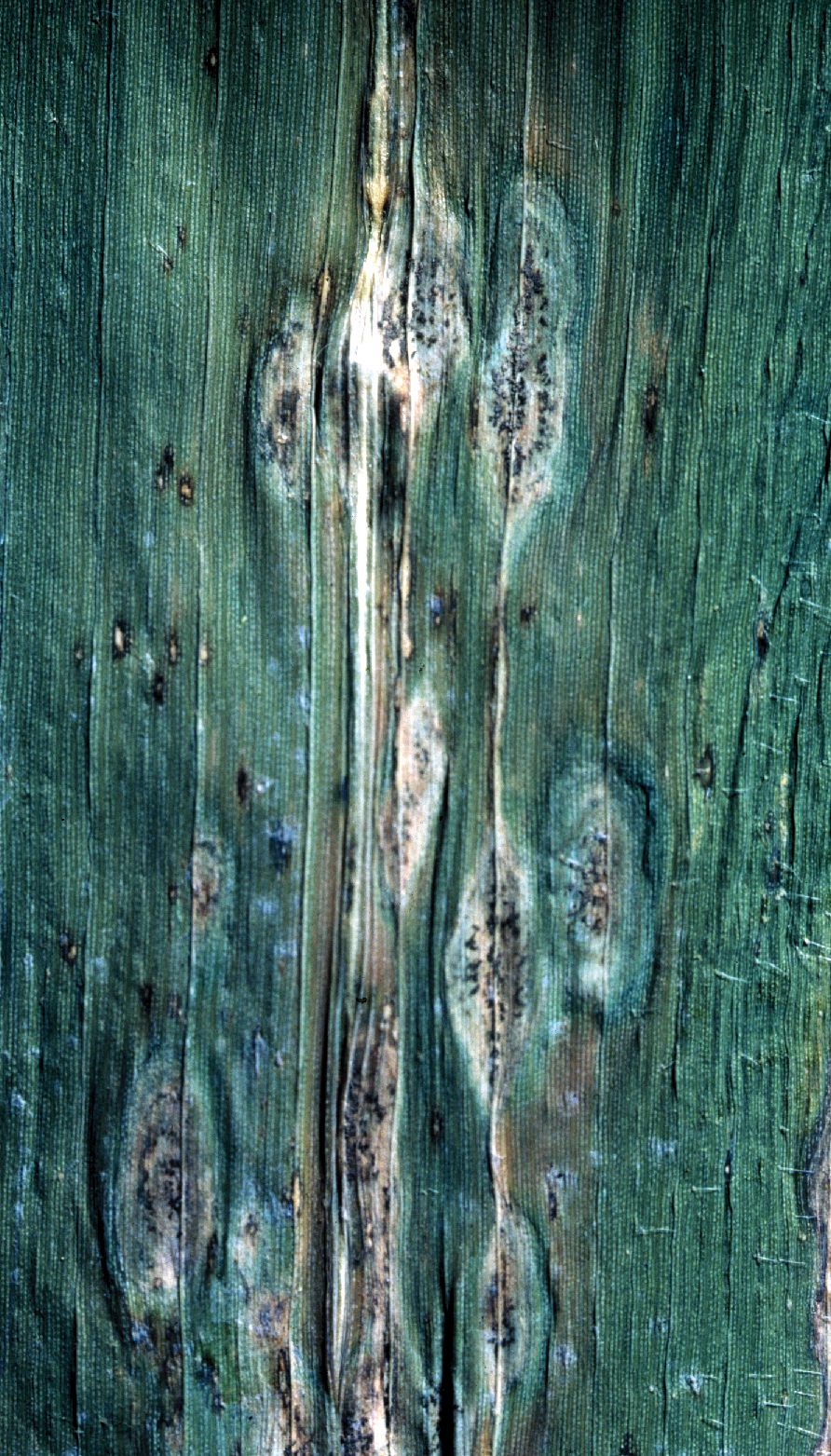
Glomerella graminicola
Glomerella graminicola
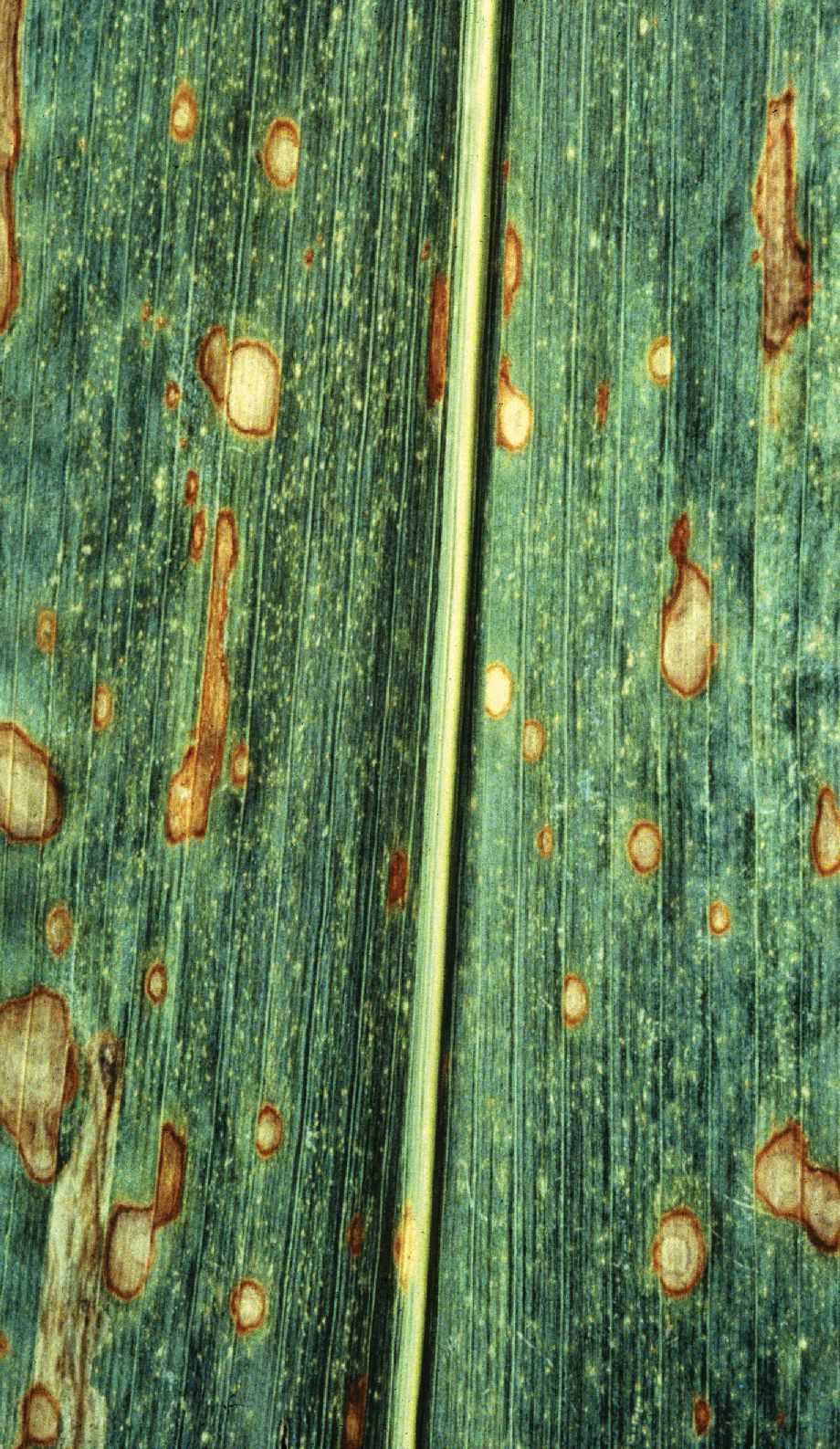
Phyllosticta maydis
Phyllosticta maydis

Kabatiella zeae
Kabatiella zeae
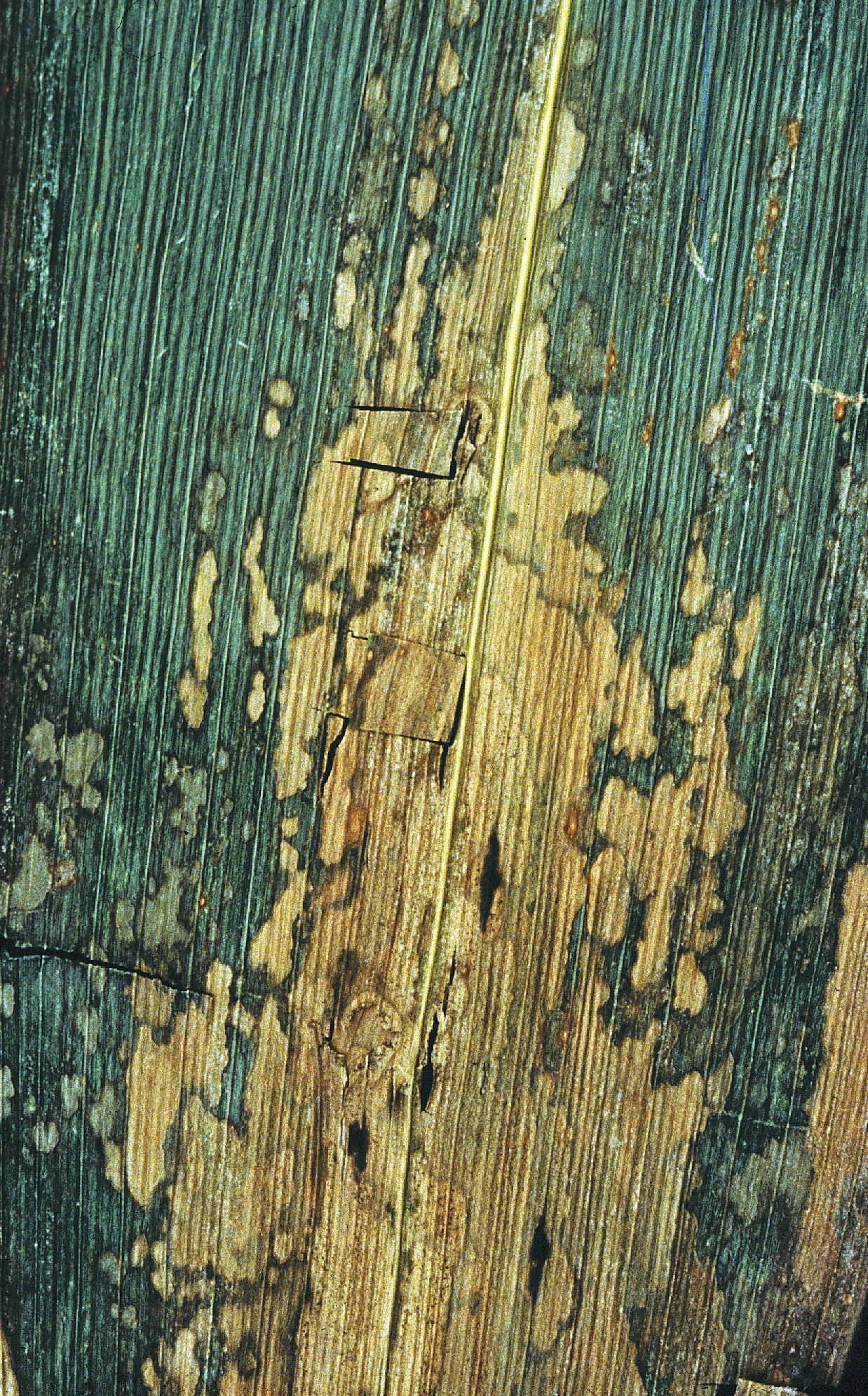
Septoria maydis
Septoria maydis
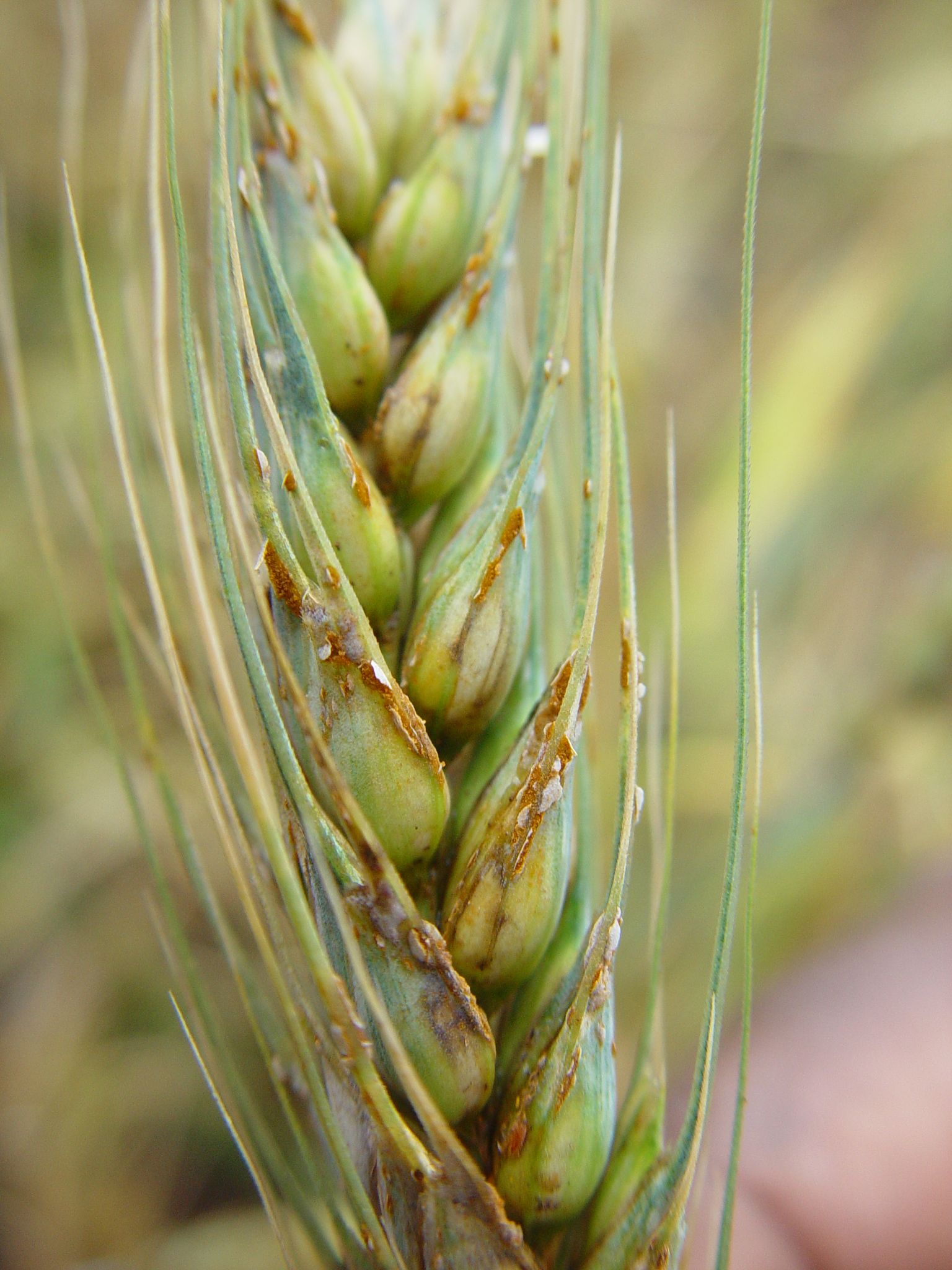
Puccinia graminis
Puccinia graminis

Puccinia graminis
Puccinia graminis
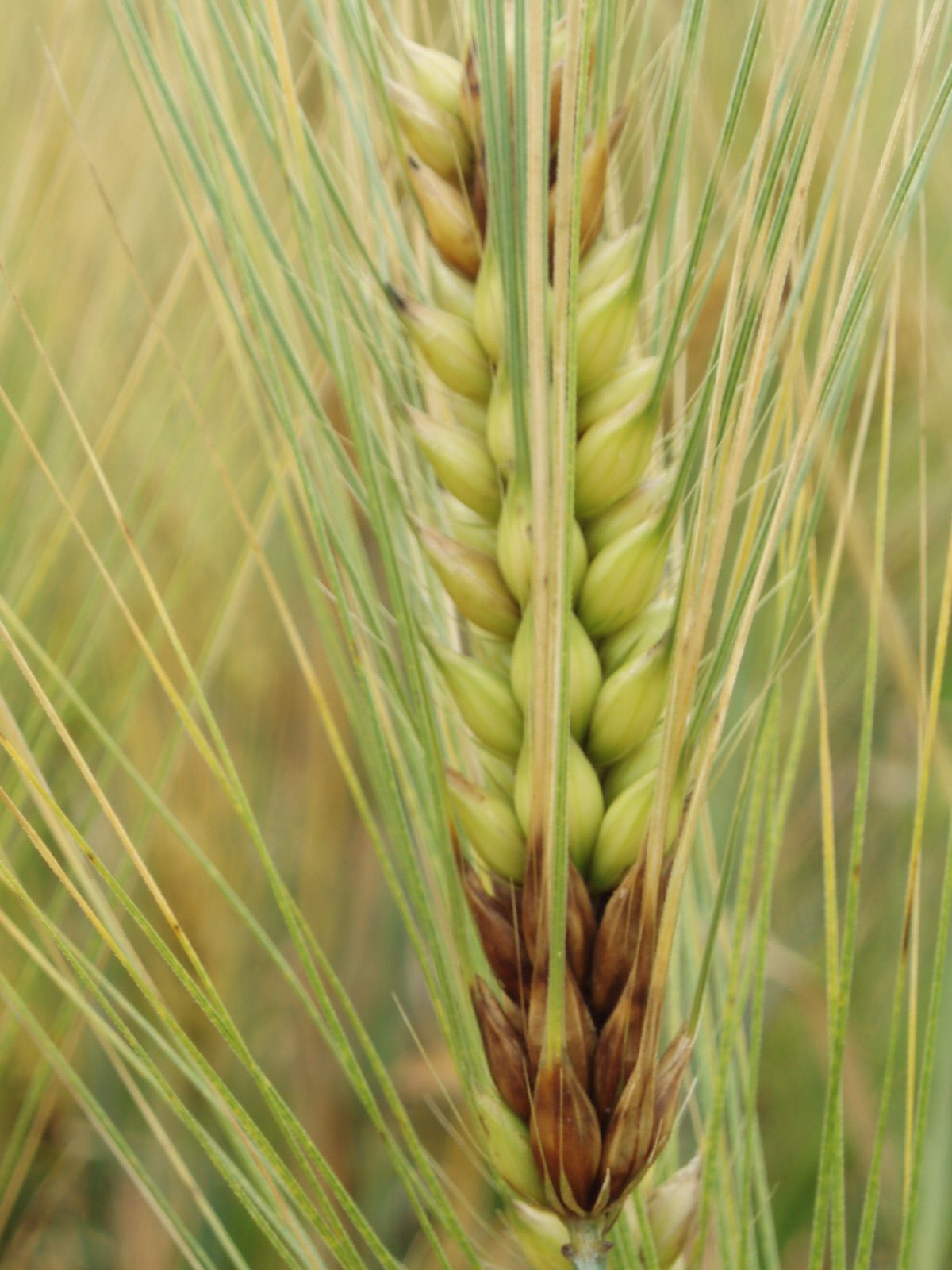
Fusarium
Fusarium

Fusarium
Fusarium
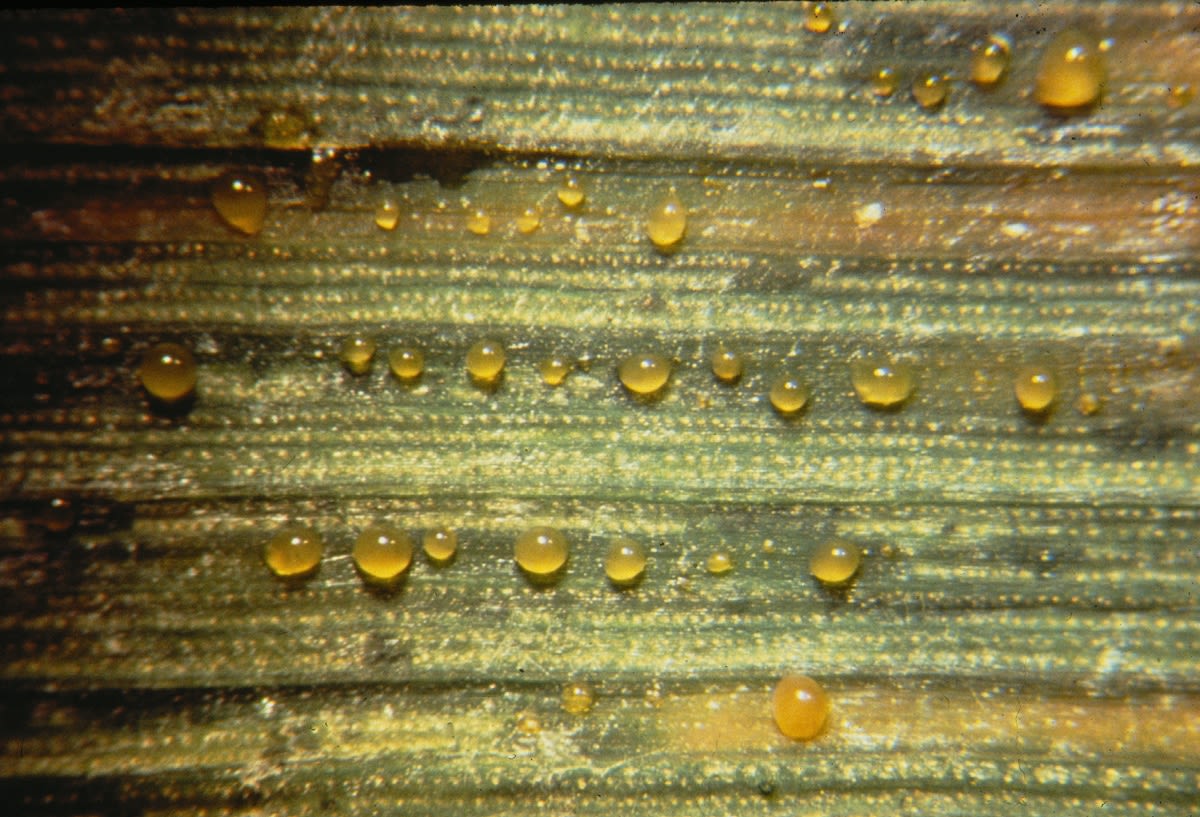
Xanthomonas translucens
Xanthomonas translucens
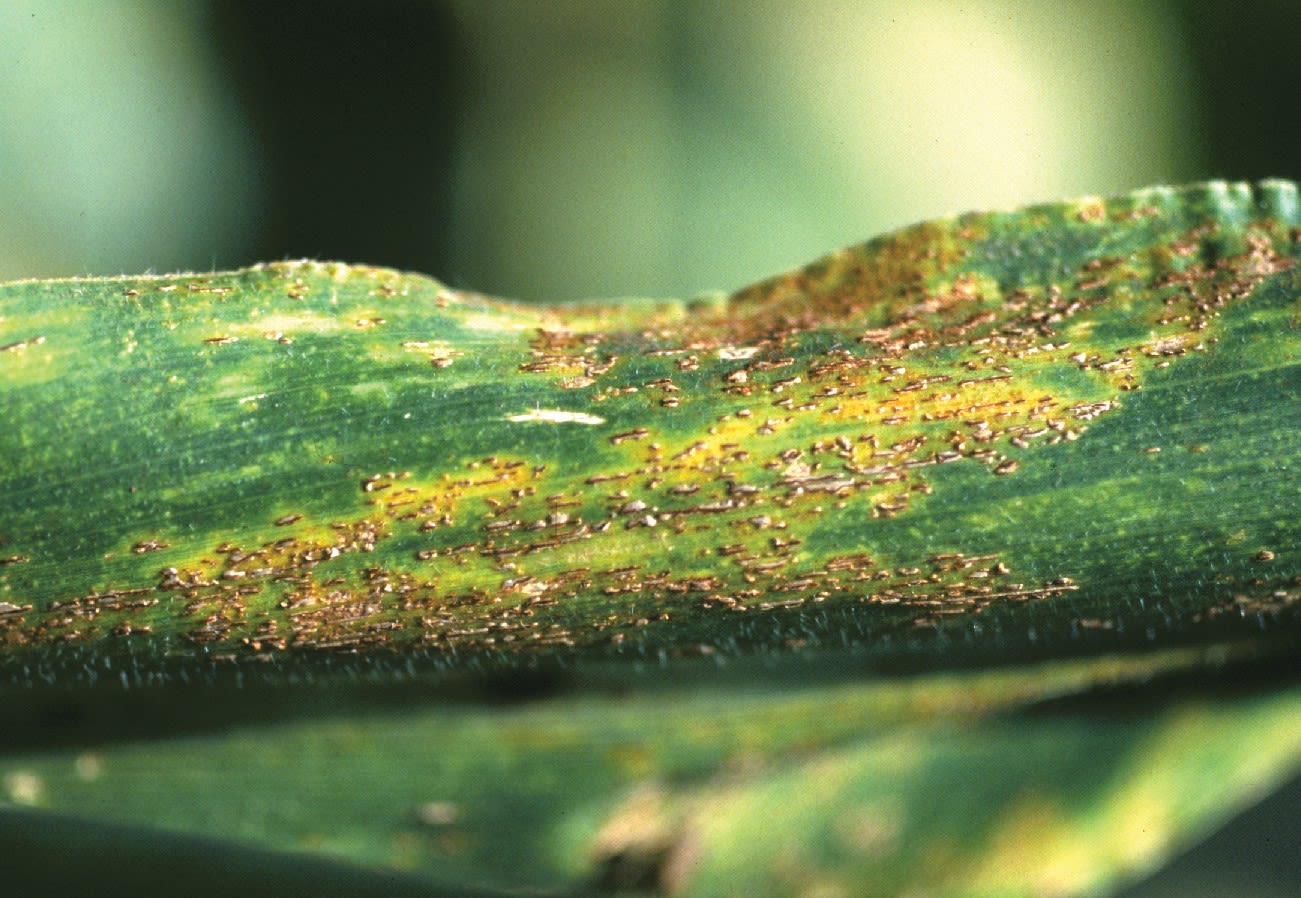
Puccinia triticina
Puccinia triticina

Phaeosphaeria maydis
Phaeosphaeria maydis
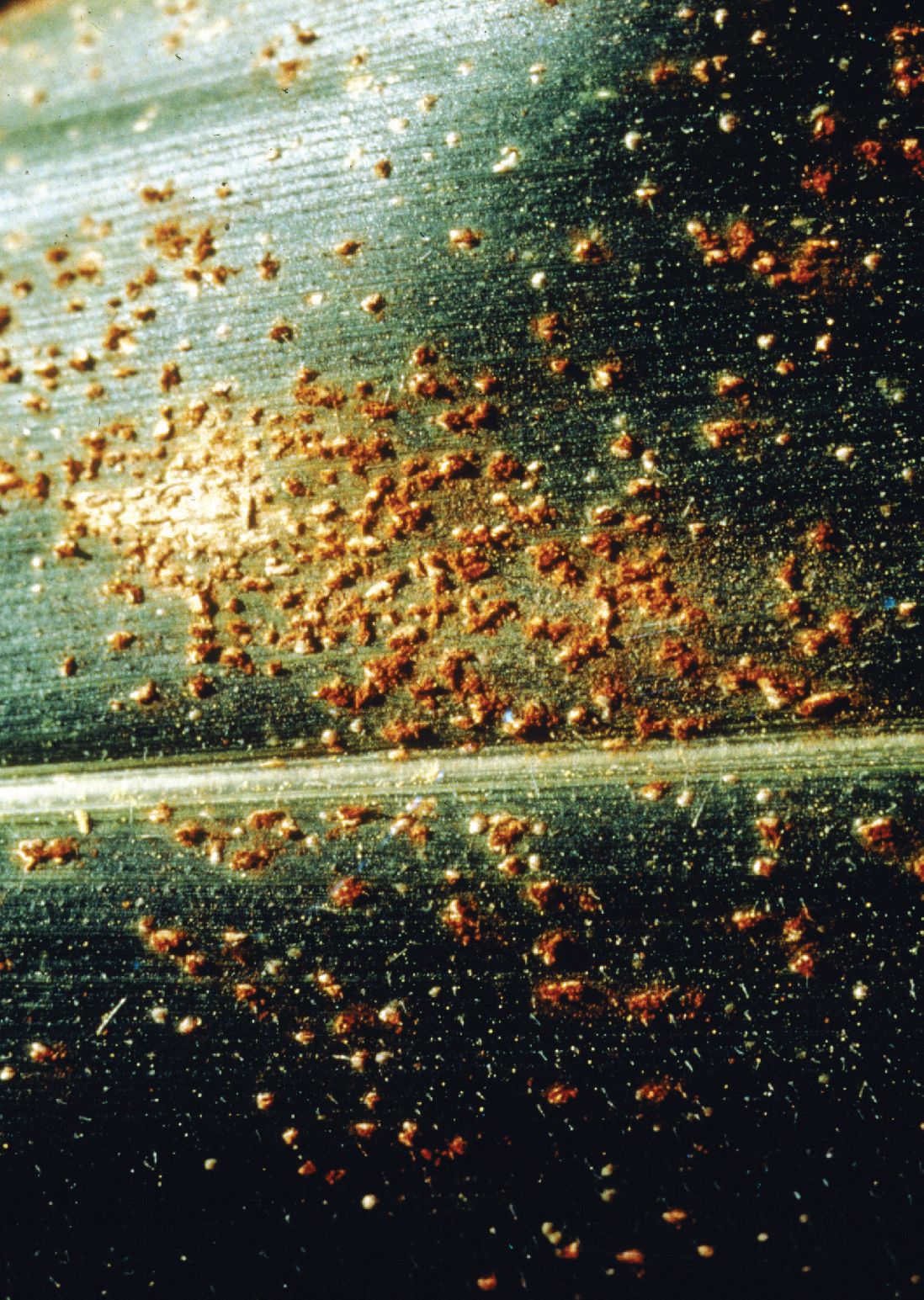
Xanthomonas translucens
Xanthomonas translucens
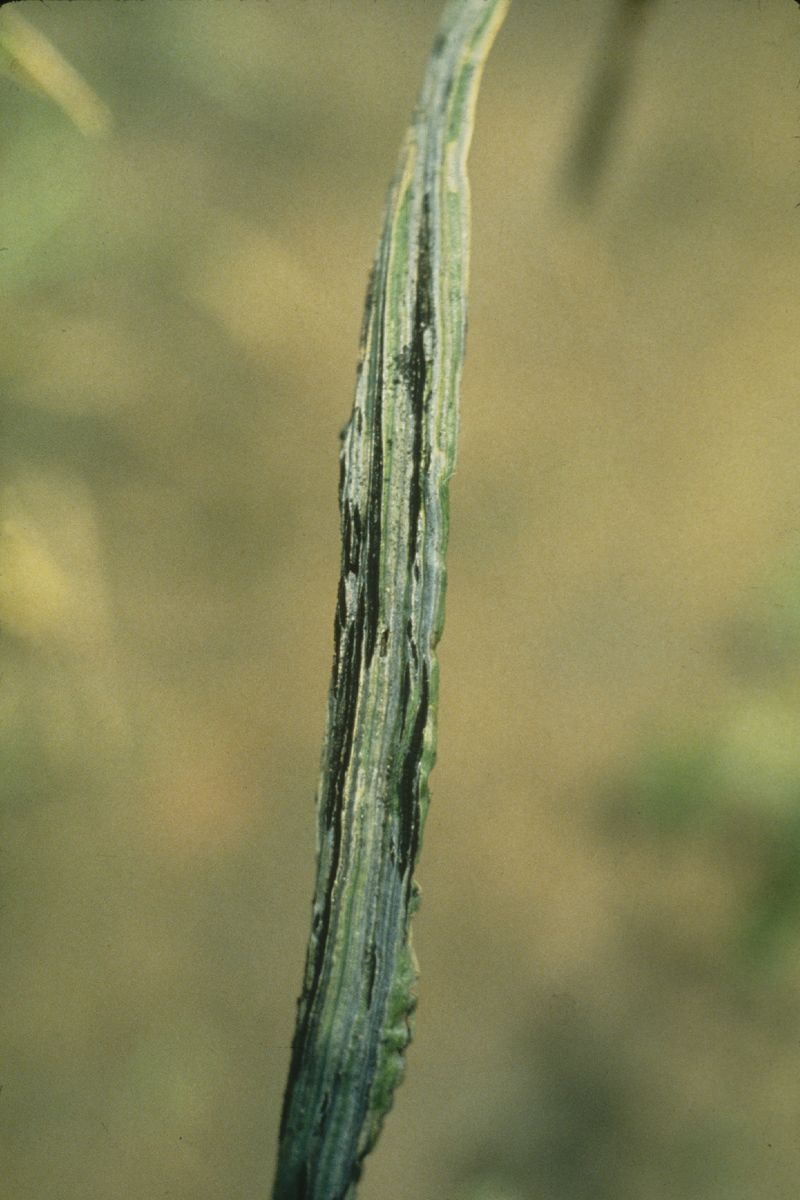
Urocystis agropyri
Urocystis agropyri
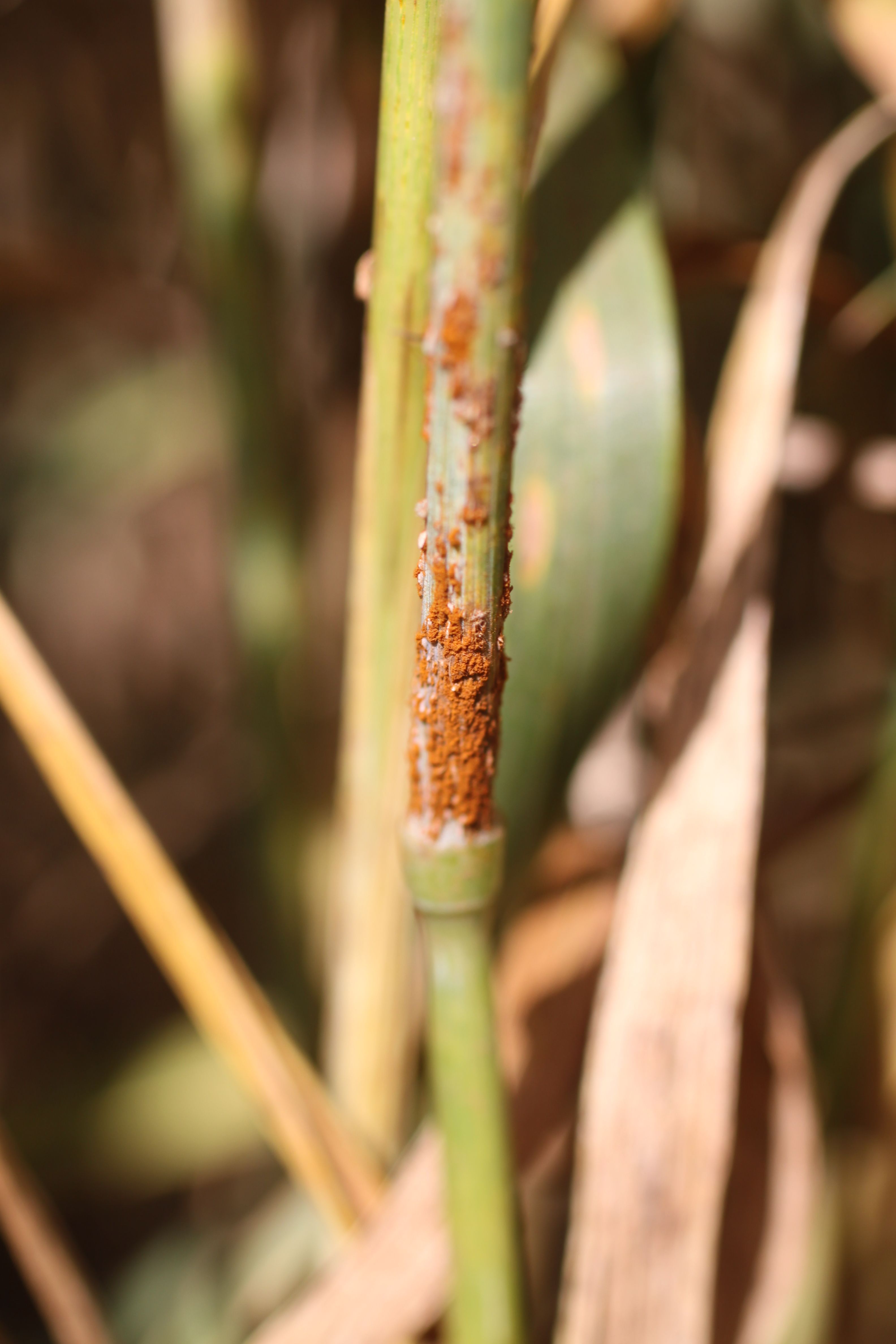
Puccinia graminis
Puccinia graminis

Puccinia graminis
Puccinia graminis

Ustilago nuda
Ustilago nuda
At least one other product containing genetically modified soil organisms is already in use in the US. Following successful funding from billionaire investors such as Bill Gates and Jeff Bezos as well as agricultural commodities trader Bunge, the company Pivot Bio launched a product called „Proven“ in 2019. This product contains bacteria that bind the nitrogen from the air and make it available for the corn seed treated in this way. These nitrogen-fixing bacteria normally cease their activity when a high nitrogen content is reached in the soil. This „off-switch“, though, has been deactivated by an intervention in their genetic material. The bacteria are thus forced to supply the maize with more and more nitrogen. This product has already been used on more than one million hectares in the US. Bayer entered into a „research collaboration“ with Pivot Bio in 2019 and has since been working on modifying other nitrogen-fixing bacteria, initially designed for its soybean seeds.
While hundreds of start-ups are cooperating with other major players of the agricultural industry to develop similar products, a team of researchers from all over the world already back in 2019 warned „that some microorganisms used as biofertilizers behave as opportunistic pathogens and belong to the biosafety level 2 (BSL-2) classification. This poses serious risk to the environmental and human health.“ Upon request from Greenpeace Magazin, Bayer stated: „Safety for people and the environment, whether in the use of crop protection products or in research, is always our top priority. We treat each commercialized microbe as a separate entity and accordingly carry out a comprehensive risk assessment at strain level.“ According to Bayer, this includes „pathogenicity and toxicity assessments for mammals and non-target organisms. This comprehensive approach is applied to our entire biologics portfolio, from whole microbes to other products of biological origin.“
So far, the business with microorganisms that are marketed simply as „biologics“ and the substances they produce, which are marketed as „biostimulants“, has been comparatively small. In 2020, fertilizers based on microorganisms generated sales of around 1.5 billion dollars globally, while pesticides of this type were already sold at a value of four billion dollars. However, the agricultural consultancy IHS Markit forecasts annual growth rates of up to twelve percent for this emerging market. Among the many millions of soil organisms, there are thousands of promising candidates and just as many possible applications in agriculture. For a few years now, dozens of „biologicals“ and „biostimulants“ from various manufacturers have already been used on European fields. The business becomes particularly lucrative when the companies not only make use of the organisms' naturally occurring properties, but when they manage to create new „biological material“ through targeted interventions in the genome of the organisms, which can then be patented.
However, at least for the time being, synthetic products remain the industry's core business. Sales of conventional pesticides have in fact massivley increased all over the world: In Africa, sales went up by 71 percent between 1999 and 2019, in Latin America even by 143 percent. In Europe, pesticides are already omnipresent in soils.
It's in our Water, in the Air,
in our Houses and in our Intestines
With the soil, pesticides are also carried off the fields. An international team of researchers investigates where the poison ends up

In 2019, researchers from Wageningen University in the Netherlands presented a worrying survey: 83% of the arable soils that they had analyzed across Europe were contaminated with pesticides. Their study caused a stir among soil ecology experts because it refuted a common claim made by the agricultural industry: namely that most pesticides are quickly broken down and rendered harmless in the soil.
Around 500 substances are approved as pesticides in the EU. Half of these substances are considered bioaccumulative, meaning that they persist in nature. A quarter of all these substances remain in the soil.
The researchers from Wageningen wanted to know more: What does this cocktail of pesticides do to the soil — and how does it affect human health? The EU funded an extensive research project in eleven European countries as well as in Argentina, from where a large proportion of the feed soy for Europe's meat industry is imported. Once again, the researchers took hundreds of samples from the soil, water and air as well as samples of household dust, stool and urine.
„We are surrounded by a cloud of poison.“
Violette Geissen, head of the „SPRINT“ research project
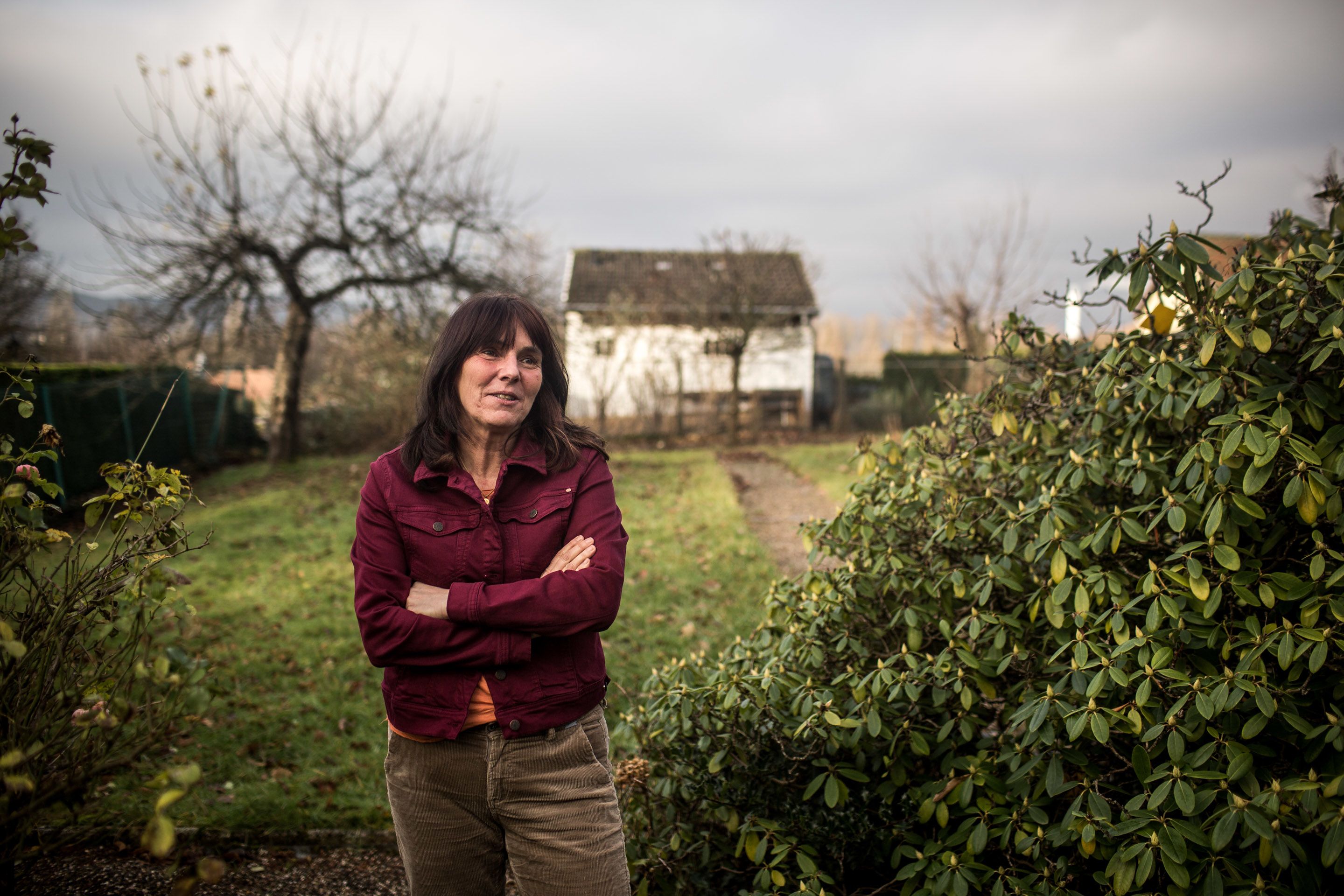
As Professor of Soil Degradation and Land Management at Wageningen University, Violette Geissen heads the pesticide project that aims to guide Europe's agriculture towards sustainable plant protection. The project name SPRINT (Sustainable Plant Protection Transition) promises quick steps, but in fact the agricultural transition is proceeding slowly.
Environmental and consumer protection organizations have long been calling for a move away from pesticides, which they criticize as „agro poisons“. The dispute over the benefits and risks of glyphosate, the most widely used herbicide in the world, has become a proxy war in a fundamental debate. While many farmers claim that glyphosate is an indispensable tool, critical organizations such as the Pesticide Action Network argue that „agriculture without glyphosate“ is not only necessary, but also possible.
The European Food Safety Authority (EFSA) has put an end to this dispute for the time being: At the end of November 2023, it decided to approve the use of glyphosate in Europe's agriculture for another ten years. The EFSA experts had reviewed around 2,400 studies that had been published in the scientific literature until mid-2020. „A low risk was identified for all representative uses of glyphosate that we assessed“, EFSA stated in response to a request from Greenpeace Magazin. The risks to earthworms, springtails and predatory mites living in the soil were also assessed as „low“ based on the available data.
Violette Geissen considers the EFSA approval for glyphosate to be wrong. As part of the SPRINT project, she develops a new methodology that should provide the authority with a better basis for decision-making in the future. Geissen says that the tests that are supposed to assess the effects of glyphosate on soil organisms, on which the approval is based, are questionable. „Most earthworm species are difficult to breed under laboratory conditions“, the 60-year-old explains. This applies, for example, to Lumbricus terrestris, the well-known common earthworm or dewworm, which is what laypeople refer to when they talk about earthworms. The agricultural industry therefore prefers to use compost worms in its experiments. Compost worms are much easier to reproduce, but they also react less sensitively to most pesticides, Geissen says, calling it a fundamental flaw in the study design. This way, she says, the tests that the industry uses to prove the harmlessness of pesticides for soil life have little significance for the reality in the soil.
„For our studies, we use representative species that actually occur in agricultural soils“, Geissen says. To be able to do this, she and her colleagues once again took dozens of soil samples throughout Europe. The earthworms that they found in these samples were then bred. Now the worms live in boxes and jars, numbered and sorted by the location of their origin and soil type, stored in a dark chamber in an adjoining wing of the campus. Only trained employees, who keep the keys to the university's poison cabinet, are allowed to spray the containers with pesticides — at the exact intervals and dosages that are common in farming.
Gone with the Wind
For another study, Violette Geissen and her team visited farmers and took samples of dust in their homes – again they came up with results of which Geissen says: „We, as scientists, are concerned.“ They found pesticide residues in all the houses. Of the 198 active substances found, they classified 42 percent as particularly harmful, and almost a third of the residues were even attributable to pesticides such as DDT, which have long since been banned in Europe due to their acute danger to humans and the environment. The substances that they found most commonly in the household dust samples were glyphosate and its degradation product AMPA, as well as a number of insecticides. „The substances can of course come into the homes with the farmers' clothing, on their shoes or on the food.“ Nevertheless, Geissen was surprised by the results: „Most of the farmers in Europe whose houses we examined for our study wear the prescribed protective clothing. And of course, they take that off before they go into their houses. Most farmers also take care not to spray on windy days to prevent the pesticides from drifting away.“ The fact that so many pesticide residues were nevertheless found in the house dust is probably the result of wind erosion, Geissen explains. „The wind disperses soil particles, and with them the adhering pesticides. They are carried away for miles and ultimately they end up also in the house.“ This is why the researchers found pesticide residues not only in the homes of conventional farmers, but also, albeit in smaller quantities, in the homes of organic farmers as well as in households of people who simply live close to agricultural areas.
The glyphosate residues that they found in the household dust are of particular concern to the researchers of the SPRINT project. In an initial assessment, they have come to the conclusion that humans could absorb significantly more glyphosate than scientists considered so far. The final results of the study are due to be published in the spring of 2024. However, project manager Geissen already says: „There is a risk that we absorb twice as much glyphosate every day as previously assumed.“ Glyphosate residues in house dust, which we may inhale, ingest or absorb through our skin on a daily basis, have not yet been sufficiently taken into account in the risk assessments, Geissen stresses. „This means that the currently applicable limit values and the maximum daily dose must be completely reassessed.“
„Collateral damage in the soil“
Glyphosate binds particularly well to soil particles. It was therefore long assumed that the herbicide would hardly spread beyond the edge of the field. However, this binding can be reversed when phosphates are applied to the field as fertilizers. Glyphosate can then be displaced into deeper soil layers and come into direct contact with soil organisms. Soil particles associated with glyphosate are also spread through the air. This had already been proven by a study commissioned by the Munich Environmental Institute. At 163 locations throughout Germany – including in cities, nature reserves and on the fields of organic farms – particle samples were taken from the air over several years using filters. The researchers found traces of a total of 138 pesticides.
Numerous studies have shown that pesticides damage many soil organisms. Glyphosate and its degradation product aminomethylphosphonic acid (AMPA), for example, inhibit the activity and reproduction of earthworms. Other studies have shown negative effects of various pesticides on springtails and woodlice.
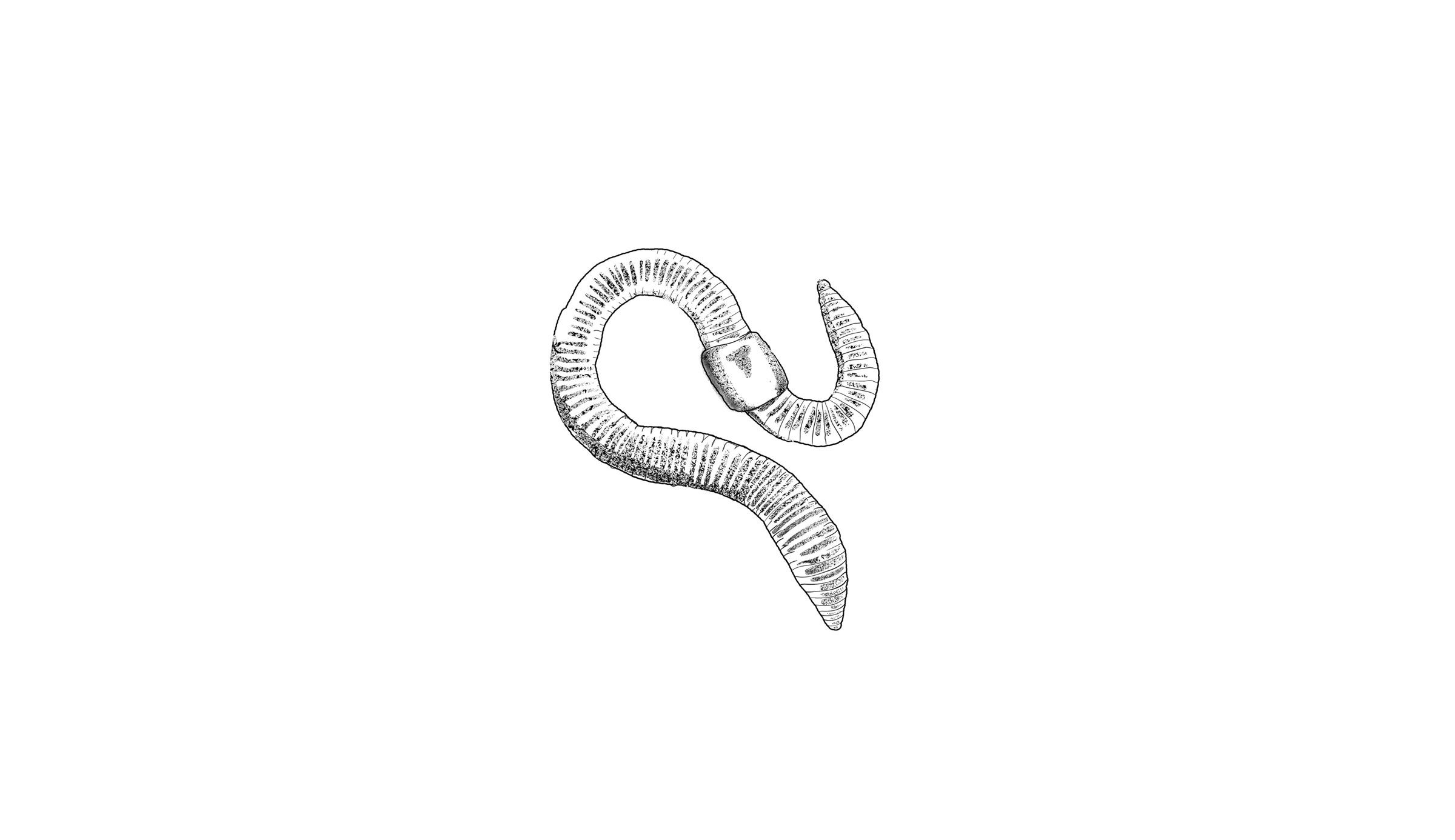
Earthworms
Charles Darwin dedicated his last book, published a year before his death, to earthworms, which he called the „friends of farmers and unheralded soldiers of mankind working day and night under the soil.“
There are more than 3000 earthworm species worldwide. The so-called endogeic earthworms dig horizontal tunnels in the top layer of soil which they mix slowly and constantly. They are pale in color as they rarely come to the surface.
Anectic earthworms, on the other hand, dig vertical tunnels to a depth of several meters. They usually come to the surface at night, when it is damp, to mate and forage. Using their head flaps, they grab dead plant and animal remains and pull the material into their tunnels to eat it. In doing so, they also digest the bacteria and fungi that have already colonized the rotting material.
Earthworms devour up to a third of their body weight every day. In their intestines, organic material and mineral components such as sand, silt and clay are mixed together. Their digestive system produces particularly good soil enriched with nutrients, so-called clay-humus complexes. The earthworms living on one hectare, which together can reach a weight of up to three tons, excrete around 600 tons of this nutritious excrement every year. Through their tireless digging and eating, they bring the organic matter directly into the soil. This new soil is ideal for the growth of plants. The worms also line their tubes with their excrement. Plant roots can grow directly into these tunnels where they find ideal fertilization. In addition, earthworm tunnels form a kind of sewer system through which rainwater can seep in quickly.
Due to their diverse functions, earthworms are considered the architects of the soil ecosystem. They serve as a pointer species and their condition is an indicator of the health of the entire underground ecosystem.

Woodlice
As these crustaceans originally come from the water, woodlice require a moist environment for their gill respiration. They are among the decomposers in soil life. Woodlice feed on detritus, dead organic material that is mixed with microorganisms in their digestive tract, which accelerates the transformation into humus. Their excretions ensure the distribution of nutrients in the soil. On their shells and in their intestines, they also transport organisms such as bacteria and fungi to new food sources.
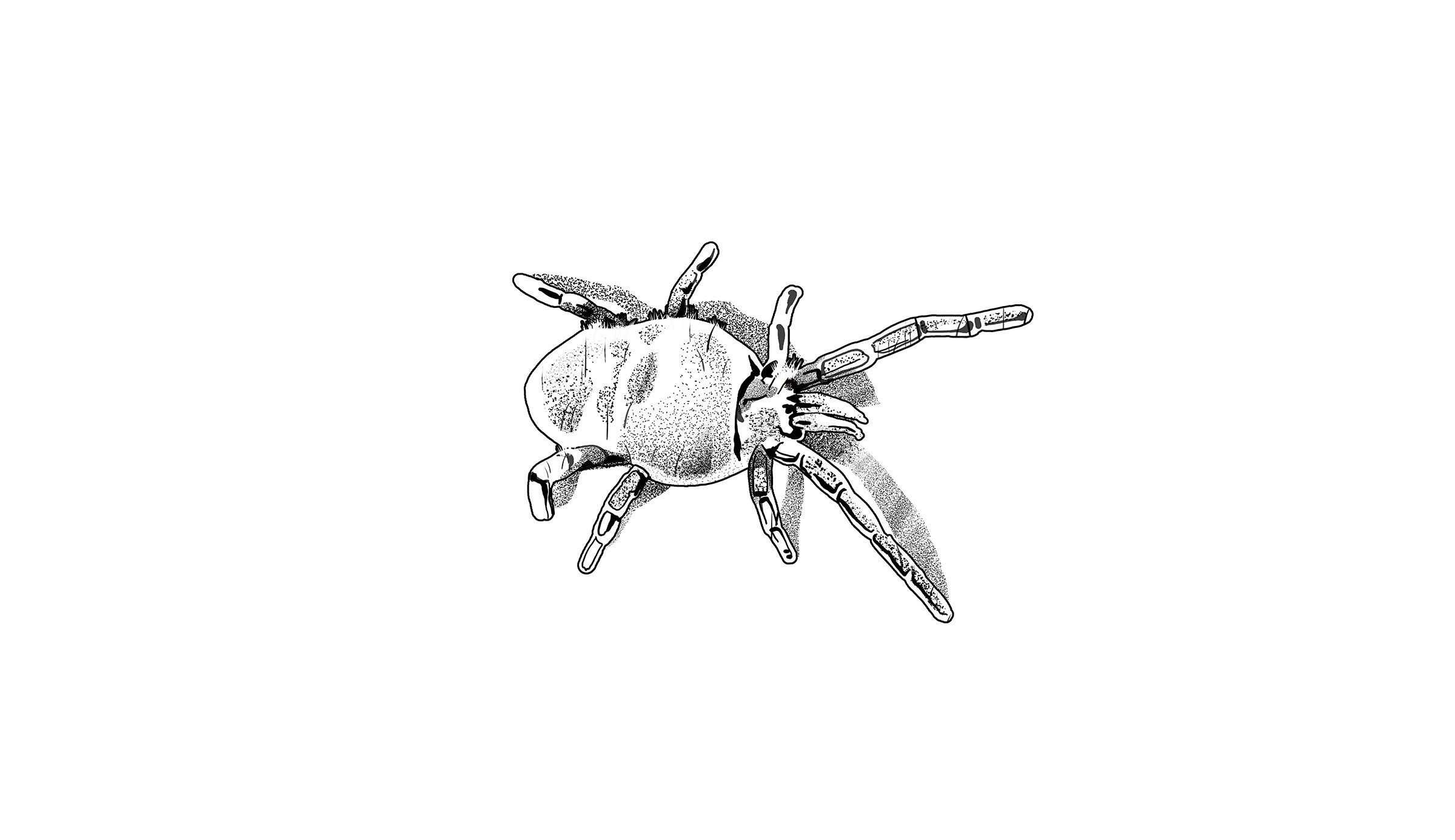
Mites
Among the numerous mite species, a rough distinction is made between horned mites and predatory mites. Horned mites feed mainly on dead leaves, algae and fungi, but they do not disdain carrion either. They are thus part of the health police in the soil. Predatory mites, on the other hand, prey on nematodes and other microorganisms. As they feed on all kinds of animals that can damage plants, predatory mites are considered beneficial organisms in farming.

Springtails
One square meter of healthy soil can contain more than 100,000 individuals from up to a hundred different species of springtails. Thsee tiny, wingless relatives of insects are important decomposers in and on the soil. They gnaw through organic material and thus increase the surface area that can be colonized by microorganisms. They thus play an important role in the conversion of organic matter into fertile humus. In addition to omnivores, there are also specialists among the springtails that primarily eat algae, fungi, carrion, excrement, pollen or microorganisms. They owe their name to the jumping fork on their rump, which allows some species to jump over thirty centimetres high and far.
It has long been known that the herbicide glyphosate not only kills plants. „The active ingredient blocks the shikimate pathway, which plants need for their metabolism“, Violette Geissen explains. „But many microorganisms such as bacteria and fungi also use this metabolic pathway."
Therefore, contrary to what manufacturers often claim, glyphosate even has an effect on insects such as bees, whose immune system critically depends on a functioning microbial community. Many insects live in symbiosis with certain bacteria that colonize their bodies. If the shikimate pathway of these bacteria is damaged by glyphosate, this can lead to developmental disorders in the insects.
Manufacturers have known for a long time that glyphosate has this antibiotic effect. Monsanto even had the product patented as an antibiotic. Most other herbicides also have an antibiotic effect. This apparently not only changes the composition of the microbiome in the soil, as some organisms are damaged while others cope better with the herbicide applications. Researchers from the UK and China also came to the conclusion that the antibiotic effect of herbicides could be „potentially contributing to the global antimicrobial resistance problem in agricultural environments.“ If one also takes into consideration the enormous amounts of manure contaminated with antibiotics from factory farming, the bacterial diversity under the ground may be in danger of becoming out of balance faster than science can decipher the secrets of soil life.
Glyphosate can also damage beneficial fungi such as mycorrhizal species that, in close symbiosis, provide plants with nutrients. Other fungal species that help regulate harmful insects in the soil were also negatively affected in trials with glyphosate. Interestingly, the active ingredient alone did not harm the fungi. The effect only occurred when the researchers applied glyphosate in combination with other active ingredients – in other words, exactly how the agent is actually used in agriculture, for example as a herbicide under the brand name RoundUp. It's a sign that RoundUp may be more toxic than the active ingredient glyphosate alone. This would mean that „tests that are only carried out with glyphosate do not do justice to reality and may produce embellished toxicity data“, an article in the German Critical Agricultural Report stated already back in 2010 when summarizing numerous studies on the effects of glyphosate on soil life under the title „Collateral damage in the soil“.
„The long-term effects of glyphosate have not been reported enough.“ This is the result of a 2021 study in which Violette Geissen and other researchers describe the effects of the herbicide on microbial communities. Their demand is clear: „New standards for residues in plant and animal products and in the environment are needed.“
Despite all concerns, the EFSA stuck to its decision to extend the glyphosate approval by ten years. And just a week after the controversial decision, the European Parliament overturned the Commission's proposal to drastically reduce the use of pesticides.
While both decisions made headlines, a project that would be unique in the world is being negotiated in Brussels largely out of the public eye: a new agreement is supposed to finally better protect the soils.
Regenerated
The agrochemical industry is eager to avoid restrictions to its farming model, politics are postponing soil protection. Against all odds, the soil-building agriculture of the future already takes shape on more and more fields.

Contents
Chapter I
Losing Ground
Preserving soils is not only key in the fight against hunger. Healthy soils also help us to brace the climate crisis, droughts and floodings as well as the mass extinction of species.
Chapter II
Worn out
The plough and artificial fertilizers drastically increased yields, but they have long devastated the Earth. In the age of the soil crisis, we need to rethink agriculture from the ground up.
Chapter III
Green Revolution 2.0
Genetically modified soil microbes, the „intelligent field“ and dubious CO2 certificates: the agricultural industry has discovered soil as a product. Meanwhile scientists unearth the true scale of contamination in our soils.
Chapter IV
Regenerated
The agrochemical industry is eager to avoid restrictions to its farming model, politics are postponing soil protection. Against all odds, the soil-building agriculture of the future already takes shape on more and more fields.

by Marius Münstermann
videos & photos Christian Werner
illustrations Erik Tuckow
editor Wolfgang Hassenstein

Recommended books, podcasts, films & organizations
Jared Diamond - Collapse. How Societies Choose to Fail or Succeed
European Alliance for Regenerative Agriculture (EARA)
European Land and Soil Alliance (ELSA)
Food and Agricultural Organisation of the United Nations (FAO) - Status of the World's Soil Resources (2015)
Life in the Soil - Podcast produced by the FU Berlin's Institute for Biology
David R. Montgomery - Dirt. The Erosion of Civilisations
No-Till Growers - YouTube channel about regenerative farming
Pesticide Atlas - Facts and figures about toxic chemicals in agriculture
Joshua Tickell, Rebecca Harrell - Kiss the Ground (documentary)
Music used under Creative Commons licences
Betelgeuse - Kunal Shingade
Golden Hour - Lakey Inspired
Filaments - Scott Buckley
Dub Trippin - MK2
Reloaded - Savfk
The Dreamer - Lakey Inspired
The Uprising - Arthur Vyncke
Uncertainty - Arthur Vyncke
Ethereal - Punch Deck
Supported by a fellowship of the

Additional footage has been provided by
BASF - BASF Archive
Bayer CropScience
Julian Chollet, Gesellschaft für mikroBIOMIK e.V.
Deutsches Zentrum für integrative Biodiversitätsforschung / TRICKLABOR
Rolf Derpsch
depositphotos.com
Mark Dümichen, "Wir mögen es grün"
EU Soil Observatory
fortepan.hu / Veszprém Megyei Levéltár/Klauszer
Maria Giménez, Wilmas Gärten
Helmholtz-Zentrum für Umweltforschung
International Maize and Wheat Improvement Center (CIMMYT)
André Künzelmann/Helmholtz-Zentrum für Umweltforschung UFZ
Dorothea Lange / Library of Congress
Ellen Larsson, R. Henrik Nilsson, Erik Kristiansson, Martin Ryberg, Karl-Henrik Larsson: Approaching the taxonomic affiliation of unidentified sequences in public databases – an example from the mycorrhizal fungi". BMC Bioinformatics
Martin Leick
Ignacio Romero Lozano, Forschungsinstitut für biologischen Landbau (FiBL)
Kevin McElvaney
Miguel Á. Padriñán
Pestizid-Atlas 2022 / Umweltinstitut München e.V.
pexels.com
picture alliance / ASSOCIATED PRESS (portrait photo of Norman Borlaug)
pixabay.com
Photograph from 1892 of a pile of American bison skulls
Robert Thompson, University of Reading
Netherlands Institute for Sound and Vision




